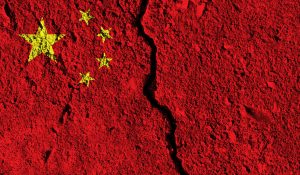On April 12, China released an 11-point paper to elaborate its approach to Afghanistan. Titled “China’s Position on the Afghan Issue,” the paper’s release was timed to match the beginning of a two-day visit to Samarkand, Uzbekistan, by Chinese Foreign Minister Qin Gang to attend the fourth meeting of the foreign ministers of Afghanistan’s neighboring countries.
Since the August 2021 U.S. departure and capture of power by the Taliban, China has steadily been inserting itself into Afghanistan. The paper is testament to the fact that Beijing is promoting the consolidation of the Taliban regime as a solution to the woes of the country, while consigning the concerns regarding systemic human rights abuses by the regime to the flames.
It is interesting to note China’s elaboration of its position on Afghanistan regarding “three respects”: respect for (i) Afghanistan’s independence, sovereignty, and territorial integrity; (ii) independent choices made by the Afghan people; and (iii) the religious beliefs and national customs of Afghanistan. The installation of the Taliban’s Islamic Emirate, according to this position, curiously represents an independent choice exercised by the Afghan people, somewhat whitewashing the recent history in which the Taliban forcefully dislodged an established and elected government and usurped power. Although the paper “hopes” that the Taliban would “build an open and inclusive political structure, adopt moderate and prudent domestic and foreign policies,” the “three nevers” listed constitute an indirect effort to ward off any attempt to force the Islamic Emirate to change its course. It is for the Taliban regime, and not any outside powers to effect these changes, in China’s eyes.
While the reconstruction of war-torn Afghanistan has been a concern for regional countries as well as the international community in the past two decades, the paper fails to acknowledge the fact that the Taliban regime’s policies have effectively stalled the process and, more damagingly, reversed many of the achievements made. Beijing, on the other hand, still hopes to transform Afghanistan from a “land-locked” to a “land-linked” country through the extension of the China Pakistan Economic Corridor (CPEC), under the Belt Road Initiative (BRI), into Afghanistan. The paper claims the Taliban now participate in CPEC.
The Taliban have indeed demonstrated their interest in CPEC’s extension into Afghanistan. However, the controversial project’s progress inside Pakistan has considerably slowed, adding to Chinese frustrations. There is significant opposition to CPEC in Balochistan, through which the extended CPEC has to traverse. The revamped and unified Baloch insurgency is carrying out repeated attacks on the project and the personnel associated with it.
India, too, remains opposed to CPEC’s lack of transparency and what it terms as the violation of its sovereignty and territorial integrity (due to CPEC passing through Pakistan-administered Kashmir). New Delhi categorically opposes CPEC’s extension into “third countries,” which renders the promise of Afghanistan’s “integration into regional economic cooperation and connectivity” via the CPEC a distant dream.
Four of the 11 points in the position paper deal with terrorism, extremism, and separatism in Afghanistan. There is considerable unanimity among the regional as well as the international community regarding the threat posed by jihadi groups in Afghanistan. The Islamic State’s Khorasan Province (ISKP) remains a potent and violent group within the country, one which the Taliban regime has failed to contain. However, the Taliban have remained opposed to any external assistance to contain ISKP, asserting that they are capable of meeting the threat on their own. In addition, their position on al-Qaida, and a number of regional terror groupings remains vague, amid accusations that Afghanistan now provides a conducive operating environment to these groups.
China, primarily concerned about Uyghur insurgents, calls for providing the Taliban with “much-needed supplies, equipment and technical assistance” under “bilateral and multilateral” cooperation frameworks. Recent reports indicated that China may already have started providing lethal weapons to the Taliban to counter terrorism, without any assurance that these weapons will be used against terror groups only and not against the Taliban’s political opposition, like the National Resistance Front (NRF). Some of these weapons, like Blowfish attack drones, may have been directly delivered to the Taliban and others have traditionally been routed through Iran. China’s position therefore, is not just an attempt to crowdfund the Islamic Emirate’s counterterror capacities, but to enhance its ability to suppress all its opposition.
The position paper further calls on the United States to return the frozen overseas assets of Afghanistan, lift sanctions on the Taliban, and deliver its pledged humanitarian aid, which China says is the “biggest external factor that hinders substantive improvement in the humanitarian situation in Afghanistan.” It faults the “military interference” and “democratic transformation” by external forces in Afghanistan over the past 20-odd years for the “enormous losses and pain on Afghanistan.” It fails to note the fact that the Taliban regime’s obscurantist policies have been single-handedly responsible for reversing the significant achievements achieved through enormous resources and sacrifices made in the last two decades.
The U.S. withdrawal from Afghanistan has indeed provided China an opportunity to try ramping up an anti-U.S. cluster in Afghanistan consisting primarily of Russia, Iran, Pakistan, and some of the Central Asian republics. However, there is little evidence so far that barring the vitriolic anti-U.S. outlook that unites them, this grouping has any concrete plan to lift Afghanistan and its people from the morass of violence, poverty, and hunger.

































